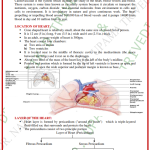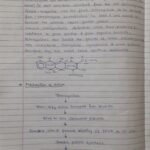|| MASS SPECTROMETRY
=)
A.Venu
M.Pharm
Pharmaceutics
Sri Krupa Institute of Pharmaceutical Sciences
Under at See ey i
DisY oo Cc = Fe a AI A ks i; | N F / i” om os
MASS SPECTROMETRY
> Introduction
> Principle
> Instrumentation
>» applications
BOBL ]6] a Re)
= Mass spectrometry is one of the most
generally applicable tools providing both
qualitative and quantitative information
about the atomic and molecular materials.
= Here the compound under the investigation is
bombarded with a beam of electrons which
produce an ionic molecule or ionic fragments
of the original species. The resulting charging
particle is then seperated according their
masses.
Mass Spectrometry
= Analytical method to measure the
molecular or atomic weight of samples
ma Geed =
=” Organic molecules are bombarded with
electron and are converted to high energetic
positively charged ions(molecular ions or
oye] qalmmle)alcye
# Which will break up in to smaller ions
(fragment ions or daughter ions).
= The loss of electron from a molecule leads to
a radical cation.
Eom AV, faa oped=e
This molecular commonly M* decomposes to a pair
of fragments which may be either radical +anion or
a small molecule + radical cation.
These molecular ions, are isolated in the electric
field at an voltage V, these charging particles which
are isolated then made to enter into an magnetic
field H. Here the field attracts the particles and
move ina circle around it.
Here the radius of the ionised molecule depends on
m, its mass. This forms the basis of separation of
particles according to their masses.
These ions are made to impinge upon the collector
inturn thus giving rise to a spectrum.
The ion source, ion path and collector of the mass
spectrometer must be under high vacuum(107 mm
Hg) for optimum operation.
INSTRUMENTATION
SAMPLE INLET SYSTEM
ION SOURCE(OR IONISATION CHAMBER)
THE ELECTROSTATIC ACCELERATING SYSTEM
THE MAGNETIC FIELD
THE ION SEPERATOR
THE ION COLLECTOR
THE VACUUM SYSTEM
1
ed
insulator
to vacuum
puri
accelerator
plate
printye sample
PON der
SAMPLE INLET SYSTEM
1. Handling gas samples:
It involves transfer of samples from small containers of
known volume coupled to a mercury manometer. The
sample is then expanded into a reservoir immediately a
head of the sample inlet
2.Introduction of liquids:
The sample is converted into gaseous state then injected
by using a
a. micropipet to a sintered glass disk under a layer of
molten gallium,or
b. by hypodermic needle injection through a silicone
rubber septum.
3. Handling of solids:
ameeie) (eMV21d a= BYL=A1V A (O)NY
pressure can be
introduced directly into
an entrance to the ion
chamber ona silicon
olreraelae
= Volatilised by gently
heating until sufficient
vapour pressure Is
indicated by the total
ion currrent indicator.
Gas Ionization techniques
Technique
Means of ionization
Fast atom bombardment(FAB) Impact of high velocity atoms onasample
dissolved ina liquid matrix.
Secondary ion MS(SIMS) Impact of high beatae ona thin film of sample on
a metal substrate (or dissolved in a liquid matrix.
Impact of nuclear fission fragments., e.g. Using
Plasma desorption isotope on solid sample deposited on a metal foil.
Matrix Assisted Laser Desorption /lonization
(MALDI)
Field Desorption Impact of high energy photon on asample
embedded ina solid organic matrix
Imposition of high electric field gradient on
sample deposited on a special solid support
Electrostatic Acceleration
System
The positive ions formed in the ionisation chamber are
withdrawn by the electric field which exists between the
first accelerator plate and the second repeller plate.
= Astrong electrostatic field between accelerator and
repeller plate of 400-4000 accelerates the ions of masses
noPaae Pattee On Sallie] 1 (ele) ao}
= The ions which escape through slit having velocities and
kinetic energies give
” eV=1/2M,V,*=1/2M.,V,*=1/2M,V,”……
= when ever the mass spectrometer is started to record the
spectrum, the second accelerator is charged to ana
potential of 400V
Magnetic field
= As the accelerated particles from the
electrical field enter magnetic field, the force
of magnetic field requires to move in a curved
oy-lae
= The radius of this curvature, r, is dependent
upon the mass m, the accelerating voltage, V,
the electron charge, e, and the strength of
the magnetic field, H.
= Itis the two properties m/e and r upon which
mass spectroscopy is based.
| BAS Sammpie ions accelerate magnetic held
enters here towards charged deflects lightest ions
slit most
“4,
od J Lyds
filament current
lonives the gas
ions separated by mass
expose film
Ion seperators or analysers
Double focussing analyser
Cycloidal focussing analyser
Quadrupole mass spectrometer
Time of flight
Radio frequency analysers
Quadrupole Mass Analyser
=” Quadrupole Mass spectrometer, initially
devised to separate uranium isotopes.
= Focusing of ions after accelerating from the
ion source is affected by a quadrupole mass
filter where they are separated according to
mass and detected by an electron multiplier.
= The mass filter consists of a quadrant of four
parallel circular tungsten rods which foce ions
by means of an oscillating and variable
radiofrequency filed.
Ion collector
= The ion beam currents are of the order of
10*> to 10°9 ampere.
= The generally employed ion collectors are
photographic plates, Faraday cylinders,
electron multipliers and electrometers.
Vacuum system
= Ahigh vacuum is to be maintained.
= The inlet system is generally maintained at
0.015 torr, the ion source at 1075 torr and
analyzer tube at 107 torr or as low as
possible.
= Ojl diffusion and mercury diffusion pumps are
commonly used in different types of
combination
Applications
= Structure elucidation
= Detection of impurities
= Quantitative analysis
= Drug metabolism studies
” Clinical, toxicological and forensic
applications
= GCMS
Reference
1. Instrumental methods of chemical analysis by
Gurdeep R. Chatwal, Sham k. Anand, first
edition page no 2.273-2.285
Organic spectroscopy by William Kemp, Third
edition page no 285-290.
Spectrometric identification of organic
compounds by Silverstein. Sixth edition page no
abe
Instrumental methods of analysis by Willard,
seventh edition page no -466
q
win nT oe tN >
oo” ae needa, aa










